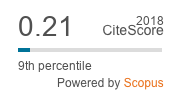Economic-behavioral Analysis of Delinquent Acts Based on the Report of Juvenile Offenders in Confinement
DOI:
https://doi.org/10.1590/0102.3772e35514Keywords:
Behavioral economics, Delinquent behavior, Behavioral perspective modelAbstract
From a behavioral-economic approach of delinquent behavior, this research aimed to identify potential consequences that could alter the cost of crime from the offender’s perspective. A questionnaire prepared to assess the level of informational and utilitarian reinforcement and punishment of these consequences was answered by 118 juvenile offenders in confinement. The reported level of informational reinforcement did not predict the level of multiplicity of offenses committed. The reported levels of utilitarian reinforcement, informational punishment, and utilitarian punishment predicted this level of multiplicity. Only the level of utilitarian punishment decreased the likelihood of an offender having been involved in more types of criminal acts. Theoretical and practical implications of these findings are discussed.
Â
Downloads
References
Ackerman, J. M. (2003). Delinquents and their friends : The role of peer effects and self-selection. The Pennsylvania State University.
Adams, J. J., & Pizarro, J. M. (2013). Patterns of specialization and escalation in the criminal careers of gang and non-gang homicide offenders. Criminal Justice and Behavior, 41(2), 237-255.
Asscher, J. J., Wissink, I. B., Deković, M., Prinzie, P., & Stams, G. J. J. M. (2014). Delinquent behavior, poor relationship quality with parents, and involvement with deviant peers in delinquent and nondelinquent adolescents: Different processes, informant bias, or both? International Journal of Offender Therapy and Comparative Criminology, 58(9), 1001-1019.
Becker, G. S. (1968). Crime and punishment: An economic approach. The Journal of Political Economy, 76(2), 169-217.
Becker, G. S. (1993). Nobel Lecture: The economic way of looking at behavior. Journal of Political Economy, 101(3), 385-409.
Boles, S. M., & Miotto, K. (2003). Substance abuse and violence: A review of the literature. Aggression and Violent Behavior, 8(2), 155-174.
Decreto-Lei 2848. (1940, 7 de dezembro). Código Penal [Criminal Code]. Rio de Janeiro, RJ: Presidência da República.
Delisi, M., Angton, A., Behnken, M. P., & Kusow, A. M. (2015). Do adolescent drug users fare the worst? Onset type, juvenile delinquency, and criminal careers. International Journal of Offender Therapy and Comparative Criminology, 59(2), 180-195.
Farrington, D. P., & Welsh, B. C. (2003). Family-based prevention of offending: A meta-analysis. Australian and New Zealand Journal of Criminology, 36(2), 127-151.
Field, A. (2009). Logistic regression. In A. Field (Ed.), Discovering statistics using SPSS (and sex and drugs and rock’ n’ roll) (3rd ed., pp. 264-313). London: Sage.
Foxall, G. R. (1998). Radical behaviorist interpretation: Generating and evaluating an account of consumer behavior. The Behavior Analyst / MABA, 21(2), 321-54.
Foxall, G. R. (2010). Invitation to consumer behavior analysis. Journal of Organizational Behavior Management, 30(2), 92-109.
Gaik, L. P., Abdullah, M. C., Elias, H., & Uli, J. (2010). Development of antisocial behaviour. Procedia - Social and Behavioral Sciences, 7(2), 383-388.
Günther, H. (2003). Como Elaborar um Questionário (Série: Planejamento de Pesquisa nas Ciências Sociais, No. 1). Brasília, DF: UnB, Laboratório de Psicologia Ambiental. Recuperado de http://www.psi-ambiental.net/XTextos/01Questionario.pdf
Jennings, W. G., Maldonado-Molina, M. M., Piquero, A. R., & Canino, G. (2010). Parental suicidality as a risk factor for delinquency among hispanic youth. Journal of Youth and Adolescence, 39(3), 315-325.
Lei 10.826, de 22 de dezembro de 2003 (2003, 22 de dezembro). Dispõe sobre registro, posse e comercialização de armas de fogo e munição, sobre o Sistema Nacional de Armas - Sinarm, define crimes e dá outras providências. Diário Oficial da União, seção 1.
Lei 11.343, de 23 de agosto de 2006 (2006, 23 de agosto). Institui o Sistema Nacional de Políticas Públicas sobre Drogas - Sisnad; prescreve medidas para a prevenção do uso indevido, atenção e reinserção social de usuários e dependentes de drogas; estabelece normas para repressão à produção não autorizada e ao tráfico ilícito de drogas; define crimes e dá outras providências. Diário Oficial da União, seção 1.
Minayo, M. C. de S. (2009). Trabalho de campo: Contexto de observação, interação e descoberta. In M. C. de S. Minayo, S. F. Deslandes, & R. Gomes (Orgs.), Pesquisa Social: Teoria, método e criatividade (pp. 61-77). Petrópolis, RJ: Vozes.
Mooi, E., & Sarstedt, M. (2011). Cluster analysis. In E. Mooi & M. Sarstedt (Eds.), A Concise guide to market research: The process, data, and methods using IBM SPSS Statistics (pp. 237-284). London: Springer.
Nijhof, K. S., de Kemp, R. A. T., & Engels, R. C. M. E. (2009). Frequency and seriousness of parental offending and their impact on juvenile offending. Journal of Adolescence, 32(4), 893-908.
Pasquali, L. (1998). Princípios de elaboração de escalas psicológicas. Revista de Psiquiatria Clínica, 25(5), 206-213.
QuickTapSurvey (Versão 5.5.1) [Aplicativo para iPads, iPhones e dispositivos Android]. Toronto, CA: TabbleDabble, Inc.
Rasmussen, E. B., & Newland, M. C. (2008). Asymmetry of reinforcement and punishment in human choice. Journal of the Experimental Analysis of Behavior, 89(2), 157-67.
Skinner, B. F. (1953). Science and human behavior. New York: MacMillan.
Southamer-Loeber, M., & Loeber, R. (1988). The use of prediction data in understanding delinquency. Behavioral Sciences & the Law, 6(3), 333-354.
Downloads
Published
How to Cite
Issue
Section
License
Copyright (c) 2012 Ariela Oliveira Holand, Jorge Oliveira-Castro

This work is licensed under a Creative Commons Attribution 4.0 International License.



